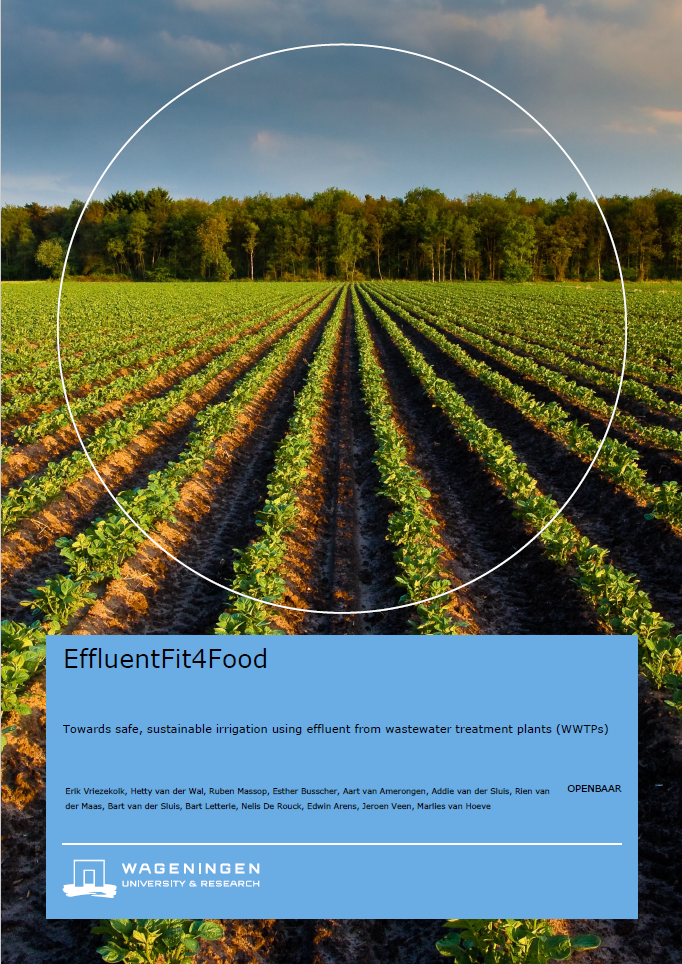Effluent Fit 4 Food
Towards safe, sustainable irrigation using effluent from wastewater treatment plants (WWTP's).
As climate change intensifies, the Netherlands faces growing pressure on water resources, particularly in balancing agricultural demands with limited water availability. Agriculture and horticulture require 100 to 150
million cubic meters of water annually, reaching up to 256 million cubic meters in dry years, mainly for irrigation. Currently, groundwater supplies 40 to 50 million cubic meters of this need. Other sources include drinking water and surface water.
In this context, effluent from wastewater treatment plants (WWTPs) presents an opportunity to mitigate water shortages and address salinisation issues. With approximately 2 billion cubic meters of treated wastewater generated annually, this resource could significantly supplement water supplies in agriculture.
However, concerns about food safety arise when considering the reuse of effluent, specifically regarding the possible transmission of pathogens, heavy metals, and organic micropollutants (OMPs) from effluent to crops. While effluent reuse is common in drought-prone areas like southern and central Europe, limited
studies have explored the potential health risks of OMPs, particularly their effects on crop health and uptake by crops.
Ensuring the safe, sustainable use of WWTP effluent also requires ongoing monitoring for harmful contaminants. Traditional monitoring approaches often rely on labour-intensive, costly, and time-consuming single-point measurements, underscoring the need for faster monitoring technologies for specific components.
This project addressed these concerns by investigating multiple aspects related to effluent reuse. Divided into two parts, Part A focused on:
• reviewing regulations for agricultural effluent reuse;
• evaluating water treatment technologies for removing OMPs;
• examining the effects of raw and treated WWTP effluent on crop health and OMP uptake.
Part B concentrated on developing rapid monitoring techniques for continuously detecting harmful effluent
components.
Collaborating partners: Wageningen University & Research, HAN University of Applied Sciences, HZ University of Applied Sciences, NFO, Waterschap Scheldestromen, Waterschap Brabantse Delta, Provincie Zeeland, Provincie Noord-Brabant, Pharem Biotech, MicroLAN
